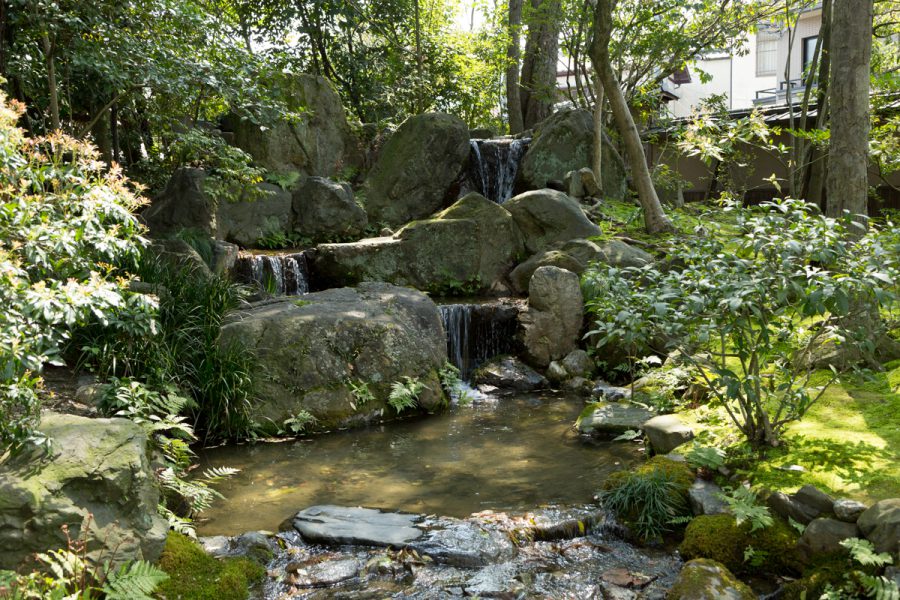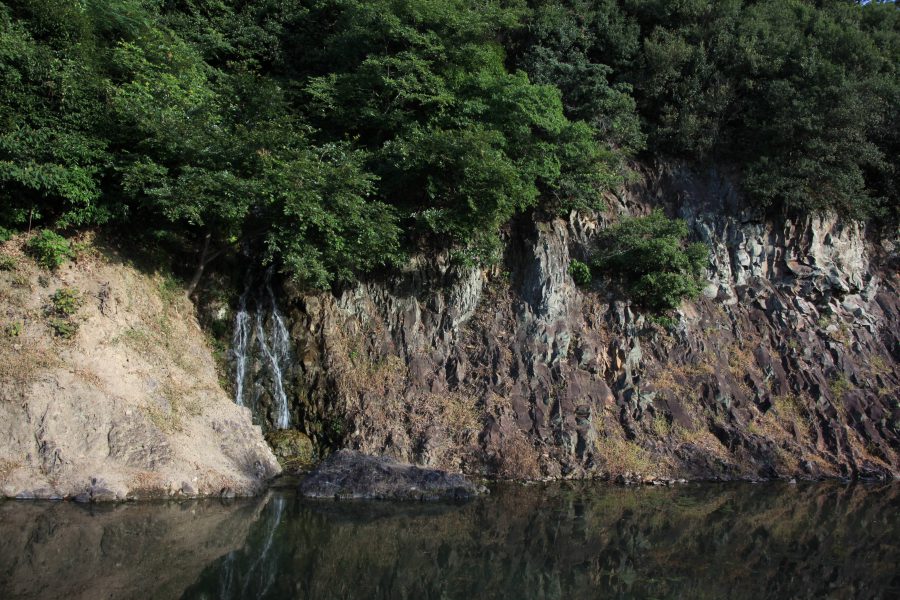Garden Knowing/
keywords
The Waterfall
 Murin-an’s three-stage waterfall (sandan-taki) is said to have been modeled after the one at Daigo-ji Temple’s Sambō-in Garden, yet functions as a naturalist motif that imparts the feeling of deep mountain scenery.
Murin-an’s three-stage waterfall (sandan-taki) is said to have been modeled after the one at Daigo-ji Temple’s Sambō-in Garden, yet functions as a naturalist motif that imparts the feeling of deep mountain scenery.
The Waterfall
“We gaze and gaze/yet never tire/of water rushing/by the cascaded palace.” These verses from the Manyōshū, Japan’s earliest poetry anthology, extol the wondrous beauty of the ancient Yoshino Palace, but today also reveal the profound depth of Japan’s adoration of natural waterfall scenery. Yet at the same time, these words may also divert our attention away from the ingenuity and innovation that the people of each historical period have invested in creating waterfalls for Japanese gardens. Indeed, of all the ways Japanese gardens have of concealing the virtuosity behind their design, the captivating sight of water gushing effortlessly downward into the garden may be the most ingenious.
In some of Kyoto’s earliest gardens, waterfall cascades were created at modest one-meter heights. With its lack of elevation difference, creating waterfalls inside the Kyoto Basin was a feat of the greatest difficulty. Yet this naturally imposed height limit spurred these court nobles to scrutinize nature in pursuit of convincing designs that still characterize Japanese gardens today. By the twelfth century, some nobles were creating retirement villas on the imperial capital’s outskirts, thus freeing them to create taller waterfalls exploiting the mountainous topography there. And with Zen Buddhism’s rise in the thirteenth and fourteenth centuries, we see mountain temple waterfalls that are now conceived of symbolically, as “dragon gate waterfalls” (ryūmonbaku) enacting the Chinese legend of a carp leaping all the way up a waterfall to become a dragon.
With the flourishing of warrior rule, this pattern of adapting the waterfall to newer and bolder designs only evolved further, with some warlords becoming intimately involved in their gardens’ planning. Daimyo lords sometimes even used water pipes to create artificial waterfall designs to entertain guests. Later, modern gardens in Kyoto exploited the abundance of flowing water made available by the Lake Biwa Canal to develop waterfall scenery that was both lavish yet strikingly naturalistic.
Technology today has largely removed the impediments that nature once imposed on waterfall construction. Yet this freedom perhaps makes the question of how to use technology to create waterfalls that enhance our appreciation of natural beauty more urgent than ever.
 Ritsurin Garden is a daimyo garden from the Edo period (1603-1868) located in Kagawa Prefecture whose Okedoi Waterfall was created using water pipes.
Ritsurin Garden is a daimyo garden from the Edo period (1603-1868) located in Kagawa Prefecture whose Okedoi Waterfall was created using water pipes.Credit: Kagawa Prefecture Tourism Association
